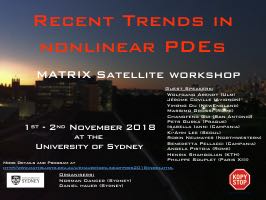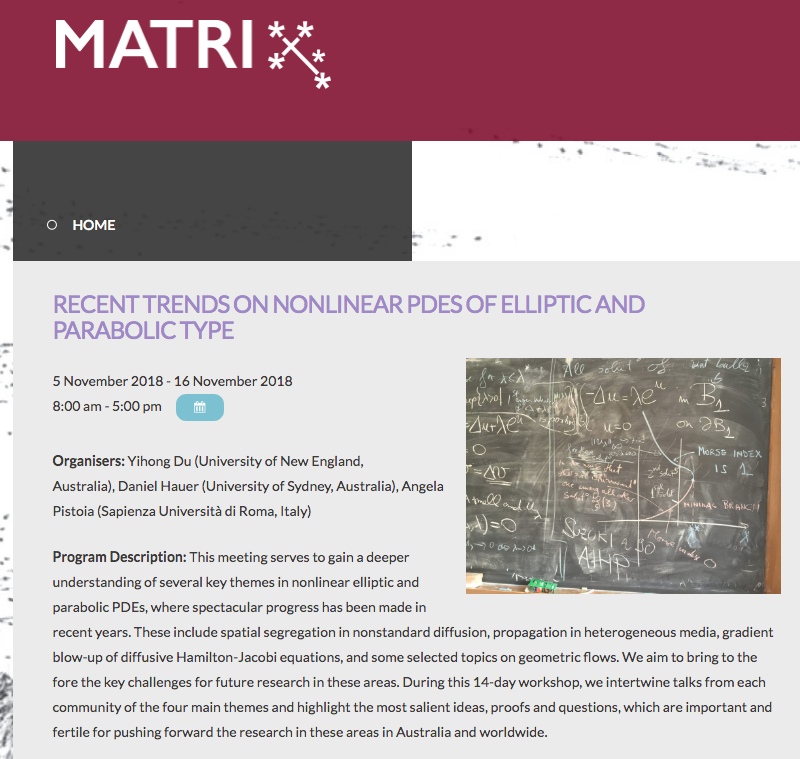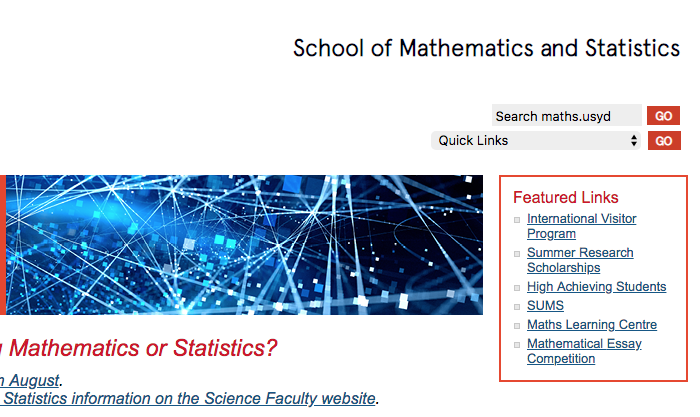Recent Trends in Nonlinear PDEs - MATRIX Satellite Workshop
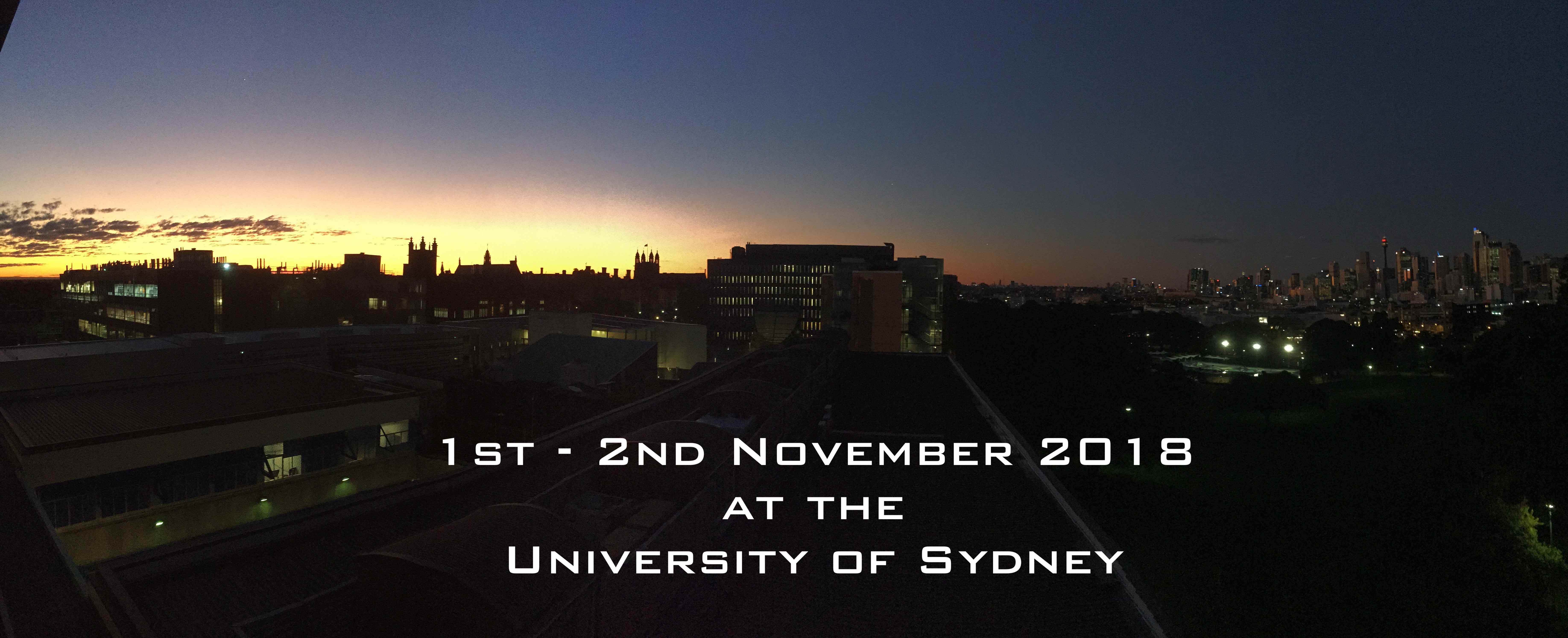
In recent years, the following themes
- Blow-up problems
- Free boundary problems
- Mathematical Biology
- Regularity to elliptic and parabolic equations
made spectacular progress in the study of nonlinear elliptic and parabolic partial differential equations. In this two-days workshop, we aim to bring to the fore the key challenges for the future in quantitatively analysing the regularity and their dynamics (blow-up behaviour, traveling waves) of solutions arising from free boundary problems related to problems in Mathematical Biology.
During this two day workshop, talks from each community are intertwined, serving to highlight salient ideas, proofs and questions, which are important fertile ground for pushing forward research in Australia and world-wide.
List of Speakers/Chair men
List of guest speakers of this workshop include:
- Ben Andrews (Canberra)
- Wolfgang Arendt (Ulm)
- Jérome Coville (Avignon)
- Yihong Du (NewEngland)
- Massimo Grossi (Rome)
- Changfeng Gui (San Antonio)
- Petr Gurka (Prague)
- David Hartley (Wollongong)
- Isabella Ianni (Campania)
- Ki-Ahm Lee (Seoul)
- Robin Neumayer (IAS Princeton)
- Benedetta Pellacci (Campania)
- Angela Pistoia (Rome)
- Derek Robinson (Canberra)
- Bernhard Ruf (Milan)
- Yannick Sire (J. Hopkins, Maryland)
- Philippe Souplet (Paris XIII)
- Susanna Terracini (Milano)
Venue
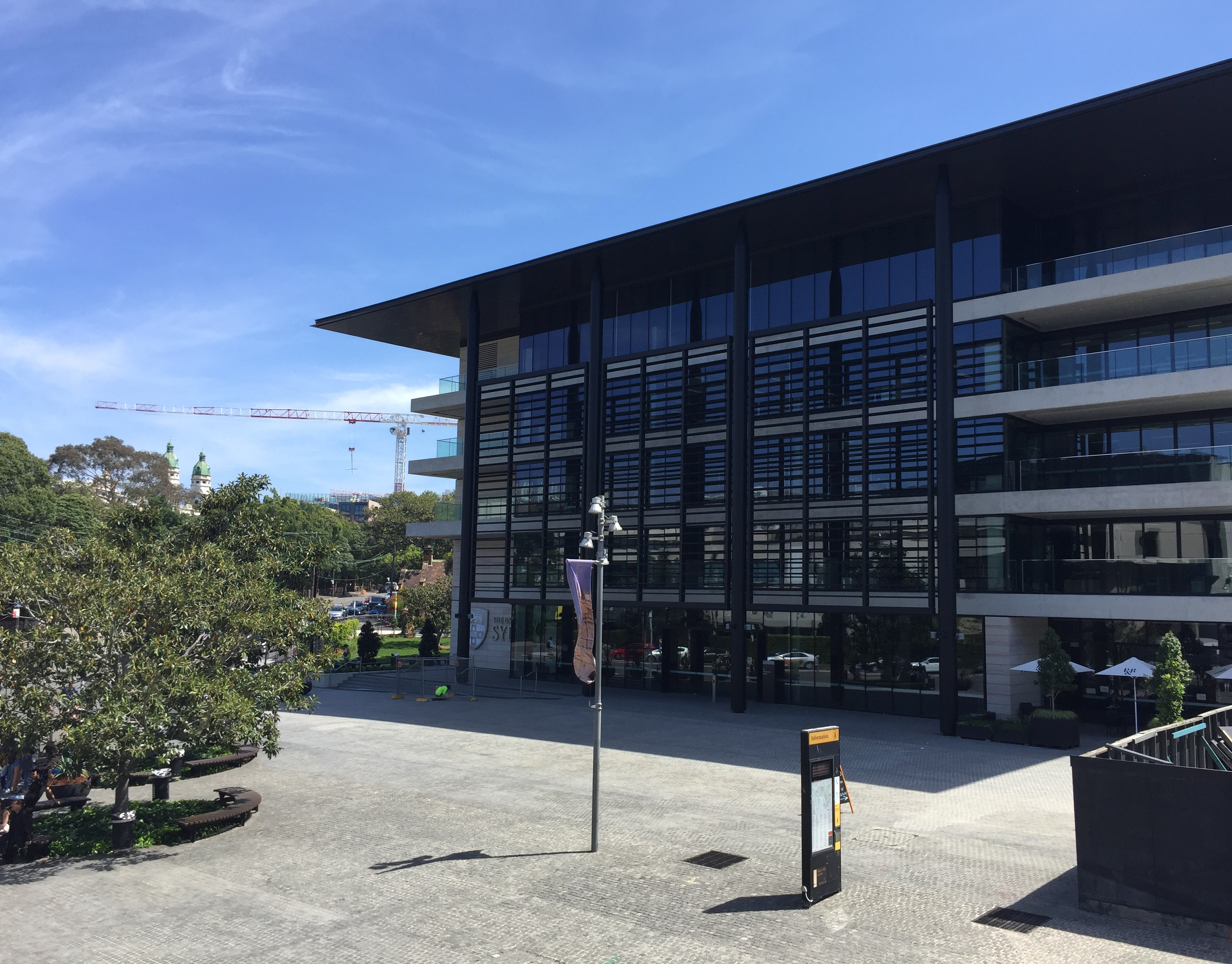 |
The workshop will be held at the University of Sydney in the new
Buidling
F23 . See also the information on
how to get there.
The venues of the Thursday sessions (1st November 2018) are:
On Friday (2nd November 2018), all sessions are in Auditorium 2 on the ground floor. |
Program
Conference Dinner
The Conference Dinner will be on Thursday, 1 November 2018, 7:30pm-9.30pm and held on a River Cruise departing from Circular Quay. If you are interested in attending the conference dinner ($40 per participant), then please include this request in your registration.
More details of the Conference Dinner:
- We depart at 6:30pm from the University of Sydney. Assembly point is the ground floor of the DVC Building (F23).
- We need to be at 7pm at King Street Wharf 1, Darling Harbour.
Abstracts of Talks
Non-concavity of the Robin ground stateBen Andrews (Australian National University, Australia) AbstractI will discuss recent work joint with Julie Clutterbuck (Monash) and Daniel Hauer (Sydney) in which we show that the first eigenfunction for the Robin problem on a convex domain is in general not log-concave, and indeed may even have non-convex super level sets. Our proof proceeds by an analysis of the case of polyhedral domains, where we show that concavity of the first Robin eigenfunction is a very rare phenomenon. |
Diffusion with non-local boundary conditionsWolfgang Arendt (University of Ulm, Germany) AbstractNon-local boundary conditions have occur if we tell a particle reaching the boundary to go back in the interior of the domain with a certain probability. There are non-local Dirichlet and non-local Robin boundary conditions. In both cases the space of all continuous functions living on the closure of the domain is the natural Banach space to work with. And indeed, In both cases, an elliptic operator subject to such non-local boundary conditions generates a positive, holomorphic semigroup (even though the holomorphic estimate is a challenge). In the Dirichlet case the semigoup is not continuous at 0, though, i.e. it is not a \(C_0\) semigroup. Still, it governs the diffusion equation subject to the non-local boundary conditions and it is a Feller semigroup with nice properties, just as in the Robin case (where it is \(C_0\)). We are able to determine the asymptotic behavior of the semigroup in terms of natural and intuitive properties of the measure defining the boundary condition. The talk is based on joint work with Stefan Kunkel and Markus Kunze; the Dirichlet case appeared in J.Functional Anal. in 2017, the Robin case will appear in J. Japanese Math. Soc. |
Propagation Phenomena in Non local Monostable Equation: Acceleration or not?Jérôme Coville (INRA Avignon, France) AbstractI will report on some result obtained with Matthieu Alfaro (U. Montpellier) on the dichotomy between two possible propagation behaviours observed in nonlocal monostable equation: a propagation at a constant speed or an acceleration phenomenon. I will describe the fine interplay between the tail of the jumping probability and the growth rate of population that leads to each of these type of propagation behaviour and give some preliminary quantification of the speed of the levels sets. |
The Fisher-KPP equation over simple graphs: Varied persistence states in river networksYihong Du (University of New England, Australia) AbstractIn this talk I'll report a recent work with my collaborators, on the growth and spread of a new species in a river network with two or three branches via the Fisher-KPP advection-diffusion equation, over some simple graphs with every edge a half infinite line. We obtain a rather complete description of the long-time dynamical behavior for every case under consideration, which can be loosely described by a trichotomy, including two different kinds of persistence states as parameters vary. The phenomenon of "persistence below carrying capacity'' revealed here appears new, which does not occur in related models of the existing literature where the river network is represented by graphs with finite-lengthed edges, or the river network is simplified to a single infinite line. |
On the number of critical points of solutions of PDE's in the plainMassimo Grossi (Sapienza Università di Roma, Italy) AbstractWe study the number of critical points of positive solutions of nonlinear partial differential equations in the plain in contractible domain. In particular we consider the case of semi-stable solutions defined in domains whose curvature change sign once. |
The Sphere Covering Inequality and its applicationsChangfeng Gui (University of Texas San Antonio, United States) AbstractIn this talk, I will introduce a new geometric inequality: the Sphere Covering Inequality. The inequality states that the total area of two distinct surfaces with Gaussian curvature less than \(1\), which are also conformal to the Euclidean unit disk with the same conformal factor on the boundary, must be at least \(4 \pi\). In other words, the areas of these surfaces must cover the whole unit sphere after a proper rearrangement. We apply the Sphere Covering Inequality to show the best constant of a Moser-Trudinger type inequality conjectured by A. Chang and P. Yang. Other applications of this inequality include the classification of certain Onsager vortices on the sphere, the radially symmetry of solutions to Gaussian curvature equation on the plane, classification of solutions for mean field equations on flat tori and the standard sphere, etc. The resolution of several open problems in these areas will be presented. The talk is based on joint work with Amir Moradifam from UC Riverside. |
Generalized trigonometric functions and the p-Laplace equationPetr Gurka (University of Life Sciences in Prague, Czech Republic) AbstractGeneralized sine functions are eigenfunctions of \(p\)-Laplace (or \((p,q)\)-Laplace) operator. We present basic properties of these functions and discuss some applications. |
On the existence of stable unduloids of dimension eightDavid Hartley (University of Wollongong, Australia) AbstractThe stability of constant mean curvature hypersurfaces is an important topic in mathematics and influences problems such as the dynamics of the volume preserving mean curvature flow. We consider the case where the hypersurfaces have free boundary contained in parallel planes, this results in the periodic Delaunay hypersurfaces. They include spheres (which are always stable), cylinders (which are stable at large radii), and nodoids (which are unstable). The final case of unduloids is more complex. All unduloids of dimension two through seven are unstable, but there exists stable unduloids of dimension nine and greater. In this talk, we will consider the missing case of whether there exists stable unduloids of dimension eight. We will also work towards finding a criterion to determine if a specific unduloid is stable or unstable. |
Radial and non-radial solutions for the Lane-Emden problem in the planar ballIsabella Ianni (Università degli Studi della Campania "Luigi Vanvitelli", Italy) AbstractWe consider the Lane-Emden problem: \[ \begin{split} −\Delta u = |u|^{p−1}u &\qquad \text{in \(B\)}\\ u = 0\hspace{22pt} &\qquad \text{on \(\partial B\)} \end{split} \] where \(B\) is the unit ball of \(\mathbb{R}^2\) centered at the origin and \(p \in (1,+\infty)\). We discuss some recent results concerning the description of the asymtptotic behavior of the radial solutions as \(p\) goes to \(+\infty\). We also show the existence of quasi-radial solutions, namely non-radial solutions whose nodal line does not touch \(\partial B\), for certain values of the exponent \(p\). |
Higher Order Convergence in HomogenizationsKi-Ahm Lee (Seoul National University, Korea) AbstractIn this talk, we are going to higher order convergence in Homogenization process through higher order interior and boundary correctors in various Nonlinear equations. Similar issues arises in vanishing viscous Hamiltonian Equations and Lower order convergence in Parabolic problems with various space and time scales. We also discuss how this idea can be applied to the other problem where some parameters approaches to zero: for example diffusive limit in Kinetic theory, asymptotic limit in parabolic flows, and so on. |
The Cheeger constant of a Jordan domain without necksRobin Neumayer (IAS Princeton, United States) AbstractIn 1970, Cheeger established lower bounds on the first eigenvalue of the Laplacian on compact Riemannian manifolds in terms of a certain isoperimetric problem. The analogous problem on domains of Euclidean space has generated much interest in recent years, due in part to its connections to capillarity theory, image processing, and landslide modeling. In this talk, based on joint work with Leonardi and Saracco, we give an explicit characterization of minimizers in this isoperimetric problem for a very general class of planar domains. |
Quasi-Linear Schrödinger equations in bounded domains: bounded, unbounded and singular coefficientsBenedetta Pellacci (Università della Campania "Luigi Vanvitelli", Italy) AbstractWe will present some existence results concerning Mountain Pass solutions of quasi-linear Schröodinger equations in bounded domains via variational methods. In order to do this we will study non-differentiable, and possibly unbounded functionals. Part of the presented results have been obtained in collaboration with Marco Squassina and Lucio Boccardo |
The Lane-Emden equation on a planar domainAngela Pistoia (Sapienza Università di Roma, Italy) AbstractI will review some old and new results concerning existence, multiplicity and asymptotic behaviour of solutions to the classical Lane-Emden equation on a planar domain when the exponent of the non-linearity is large. |
On uniqueness of diffusion processesDerek W. Robinson (Australian National University, Australia) AbstractWe discuss uniqueness of solutions of parabolic diffusion equations on \(L_1(\Omega)\) and \(L_2(\Omega)\) where \(\Omega\) is a domain in \(\mathbb{R}^d\). Specifically we consider equations \[ \partial_t\varphi_t+H\varphi_t=0 \] where \(H=-\sum^d_{k,l=1}\partial_k\, c_{kl}\,\partial_l\) with the coefficients \(c_{kl}\) real symmetric \(L_\infty(\Omega)\)-functions and \(C(x)=(c_{kl}(x))>0\) for almost all \(x\in \Omega\). We further assume that \[ a^{-1}d_\Omega^{\;\delta}\,I\leq C\leq a\,d_\Omega^{\;\delta}\,I, \] with \(a, \delta>0\), for \(d_\Omega\leq 1\) where \(d_\Omega\) is the Euclidean distance to the boundary of \(\Omega\). Uniqueness depends on geometric properties, e.g. the Hausdorff dimension \(s\) of the boundary \(\partial\Omega\), and the degeneracy of the coefficients on the boundary, i.e. the value of \(\delta\). If \(s\) is small then boundary effects should be relatively insignificant. Similarly if the degeneracy \(\delta\) is strong then the boundary tends to be inaccessible and of little consequence to the diffusion. These effects are both important for uniqueness of the process. In particular one has \(L_1(\Omega)\)-uniqueness if and only if \(\delta\geq 1+(s-(d-1))\). This result is valid with mild regularity restrictions on the boundary and applies to Lipschitz domains and a wide class of domains with fractal boundaries. We also explain why one should expect \(L_2(\Omega)\)-uniqueness under similar circumstances if and only if \(\delta\geq (3+(s-(d-1)))/2\). Curiously the condition for \(L_1(\Omega)\)-uniqueness is the condition for the failure of the corresponding Hardy inequality. A similar relation is expected for the conjectured \(L_2(\Omega)\)-condition and the Rellich inequality. |
A heat equation with exponential nonlinearity and with singular data in \(\mathbb{R}^2\)Bernhard Ruf (Università di Milano, Italy) AbstractWe consider a semilinear heat equation with exponential nonlinearities and singular data in \(\mathbb{R}^2\). In \(\mathbb{R}^N\), \(N \ge 3\), critical growth related to singular initial data is polynomial and has been studied by several authors. Existence and non-existence results for singular initial data in suitable $L^p$-spaces were obtained by F. Weissler and H. Brezis - T. Cazenave; furthermore, non-uniqueness results for certain singular initial data were given by W.-M. Ni - P. Sacks and E. Terraneo. In \(N = 2\) critical growth is given by nonlinearities of exponential type (cf. N. Trudinger - J. Moser). With prove that similar phenomena, namely existence, non-existence and non-uniqueness, occur for suitable exponential nonlinearities and singular initial data in certain Orlicz spaces. This is joint work with N. Ioku (Ehime University) and E. Terraneo (University of Milan). |
Extremal metrics in conformal classes on Riemannian manifolds and applications to isoperimetry and minimal surfacesYannick Sire (Johns Hopkins University, United States) AbstractCritical points of eigenvalues (with respect to the metric) of differential operators in fixed area surfaces are important objects to understand the geometry and topology of surfaces, after the program initiated by Yau and collaborators. I will describe several results related to existence and regularity of extremal metrics for any eigenvalue of the Laplace-Beltrami on smooth surfaces. Then I will move on to their characterizations as generating minimal immersions by eigenvectors into round spheres. I will describe also several applications to isoperimetric inequalities on the 2-sphere. I will finally describe recent results in higher dimensions and some open problems in the complex case. |
Diffusive Hamilton-Jacobi equations and their singularitiesPhilippe Souplet (University Paris XIII, France) AbstractWe consider the diffusive Hamilton-Jacobi equation \[u_t-\Delta u=|\nabla u|^p \] with homogeneous Dirichlet boundary conditions. This equation arises in stochastic control theory, as well as in KPZ type models for interface growth in ballistic deposition processes, and it constitutes a model case of parabolic equations with first order nonlinearity. The solutions display a variety of interesting behaviors and we will discuss two classes of phenomena:
|
Segregated configurations involving the square root of the Laplacian and their free boundariesSusanna Terracini (Università di Torino, Italy) AbstractWe study the local structure and the regularity of free boundaries of segregated critical configurations involving the square root of the laplacian. We develop an improvement of flatness theory and, as a consequence of this and Almgren's monotonicity formula, we obtain partial regularity (up to a small dimensional set) of the nodal set, thus extending the known results by Caffarelli and Lin, Tavares and Terracini for the standard diffusion to some anomalous case. This is a joint work with Daniela De Silva. |
Registration
Every interested researcher is invited to attend and participate at this event.
Please send an email to Daniel Hauer for registering to the conference.
This event has especially the intention to give PhD students and early career researchers (ECR) the opportunity to meet some of the leading experts in the field of nonlinear partial differential equations. The participation of each ECR at this workshop is warmly welcomed.


